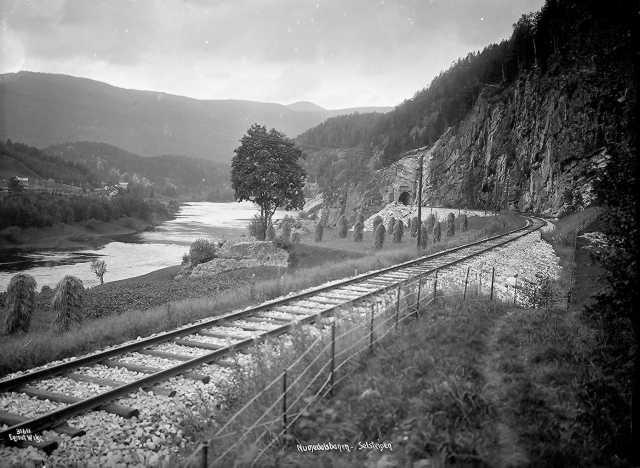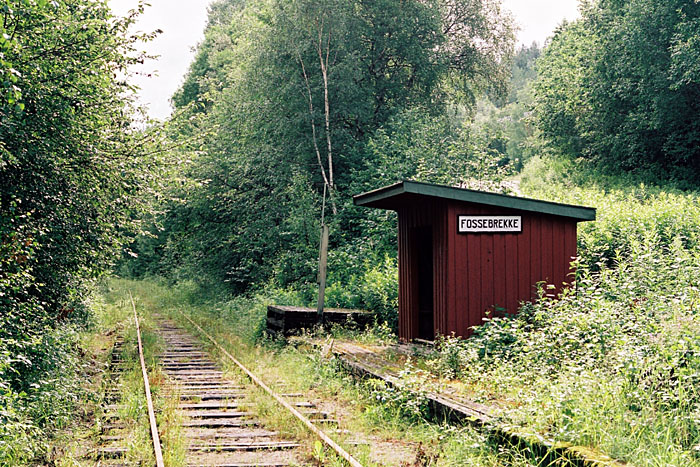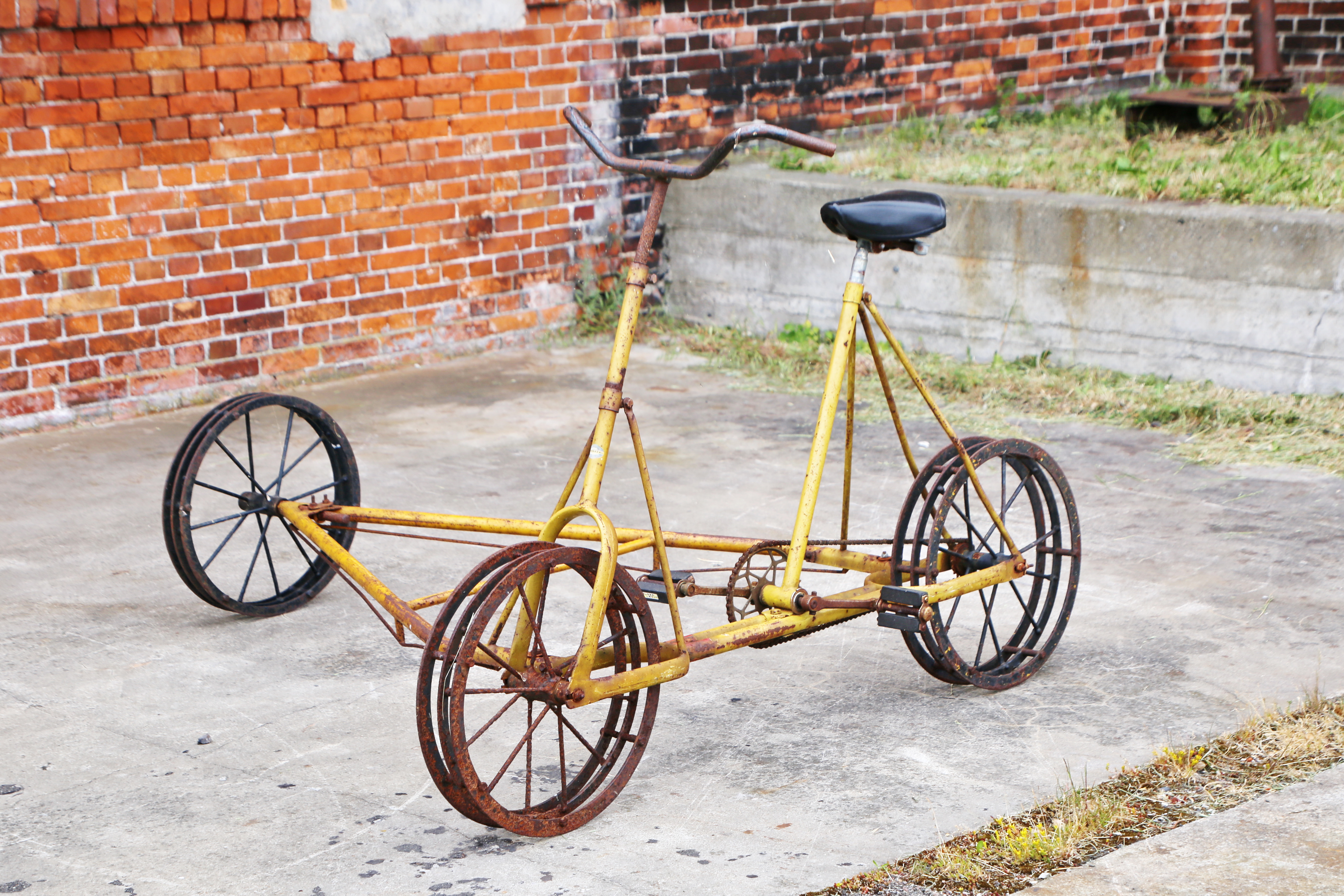|
Rødberg Nore
Rødberg is the administrative centre of Nore og Uvdal municipality in Buskerud, Norway. Rødberg is located in the Districts of Norway, Norwegian traditional district and valley of Numedal. Its population (2005) is 498, and it is located on the Rødberg dam () on the Numedalslågen River. The local power stations, Rødberg Nore 1 in operation 1928 and Nore 2 in operation since 1946, utilize waterflow from the Rødberg Dam. The plants are affiliated with Statkraft, the Norwegian state owned electricity company. Rødberg was once a railway station, being the terminal station of the now-defunct Numedal Line, Numedal railway line (''Numedalsbanen'') which ran up the Numedal valley between Kongsberg and Rødberg. The final passenger service ended in 1988. The rail line north of Rollag was closed in 1989. With that being said, it is still possible to travel to Rødberg by rail via Draisine rentals from the nearby town of Veggli. References Villages in Buskerud Populate ... [...More Info...] [...Related Items...] OR: [Wikipedia] [Google] [Baidu] |
Numedalsbanen Roedberg
The Numedal Line () is a long railway line that runs up the Numedal valley between Kongsberg and Rødberg in Buskerud, Buskerud county, Norway. Built and operated by the Norwegian State Railways, the non-electrified, standard gauge line passes through the municipalities of Kongsberg, Flesberg, Rollag and Nore og Uvdal. It is now owned by the Norwegian National Rail Administration. The first plans for a line through Numedal were launched after the Sørland Line reached in Kongsberg in 1871. After it was decided that the Bergen Line would instead follow Hallingdal, the Numedal plans lay dead until it was decided that a railway was necessary to build two hydroelectric power stations near Rødberg. The plans were passed in 1918, the first trains started running in 1924 and the line was officially opened in 1927. At first all services were provided with steam locomotives, but from the 1930s diesel multiple units were used for passenger trains. The line was frequented with classes NSB ... [...More Info...] [...Related Items...] OR: [Wikipedia] [Google] [Baidu] |
Nore Og Uvdal
Nore og Uvdal is a municipality in Buskerud county, Norway. It is part of the traditional region of Numedal. The administrative centre of the municipality is the village of Rødberg. The area of ''Nore'' was separated from the municipality of Rollag in 1858. The municipality of Nore was divided into two municipalities on 1 January 1901: Nore and Uvdal. These two municipalities were merged back together on 1 January 1962, and the new municipality was called ''Nore og Uvdal''. General information Name The municipalities of Nore and Uvdal were joined together in 1962 into ''Nore og Uvdal''. The Old Norse form of Nore was ''Nórar''. The name is the plural form of ''nór'' which means "narrow sound or strait". The name originally belonged to the vicarage (and church site) at Norefjorden. The Old Norse form of Uvdal was ''Uppdalr''. The first element is ''upp'' meaning "upper" or "high" and the last element is ''dalr'' which means "valley" or "dale". The name originally belon ... [...More Info...] [...Related Items...] OR: [Wikipedia] [Google] [Baidu] |
Buskerud
Buskerud () is a Counties of Norway, county and a current electoral district in Norway, bordering Akershus, Oslo, Innlandet, Vestland, Telemark and Vestfold. The region extends from the Oslofjord and Drammensfjorden in the southeast to Hardangervidda mountain range in the northwest. The county administration was in modern times located in Drammen. Buskerud was merged with Akershus and Østfold into the newly created Viken (county), Viken County on 1 January 2020. On 23 February 2022, the Viken County Council voted in a 49 against 38 decision to submit an application to the Norwegian government for a county demerger. Due to this, Buskerud (except the area forming the defunct municipalities of Røyken and Hurum) was re-established in 2024. Etymology The county was named after the old manor Buskerud Manor, Buskerud () (Biskopsrøysa) located on the west side of the Drammenselva, Drammen River in Åmot, Buskerud, Åmot, Modum municipality. The first element is the genitive case of ', ... [...More Info...] [...Related Items...] OR: [Wikipedia] [Google] [Baidu] |
Norway
Norway, officially the Kingdom of Norway, is a Nordic countries, Nordic country located on the Scandinavian Peninsula in Northern Europe. The remote Arctic island of Jan Mayen and the archipelago of Svalbard also form part of the Kingdom of Norway. Bouvet Island, located in the Subantarctic, is a Dependencies of Norway, dependency, and not a part of the Kingdom; Norway also Territorial claims in Antarctica, claims the Antarctic territories of Peter I Island and Queen Maud Land. Norway has a population of 5.6 million. Its capital and largest city is Oslo. The country has a total area of . The country shares a long eastern border with Sweden, and is bordered by Finland and Russia to the northeast. Norway has an extensive coastline facing the Skagerrak strait, the North Atlantic Ocean, and the Barents Sea. The unified kingdom of Norway was established in 872 as a merger of Petty kingdoms of Norway, petty kingdoms and has existed continuously for years. From 1537 to 1814, Norway ... [...More Info...] [...Related Items...] OR: [Wikipedia] [Google] [Baidu] |
Districts Of Norway
The country of Norway is historically divided into a number of districts. Many districts have deep historical roots, and only partially coincide with today's administrative units of counties of Norway, counties and municipalities of Norway, municipalities. The districts are defined by geographical features, often valleys, mountain ranges, fjords, plains, or coastlines, or combinations of the above. Many such regions were petty kingdoms up to the early Viking Age. Regional identity A high percentage of Norwegians identify themselves more by the district they live in or come from, than the formal administrative unit(s) whose jurisdiction they fall under. A significant reason for this is that the districts, through their strong geographical limits, have historically delineated the region(s) within which one could travel without too much trouble or expenditure of time and money (on foot or skis, by horse/ox-drawn cart or sleigh or dog sled, or by one's own small Watercraft rowing, ro ... [...More Info...] [...Related Items...] OR: [Wikipedia] [Google] [Baidu] |
Numedal
Numedal () is a valley and a traditional district in Eastern Norway located within the county of Buskerud. It traditionally includes the municipalities Flesberg, Nore og Uvdal and Rollag. Administratively, it now also includes Kongsberg. Geography Numedal is the southernmost valley of the major valleys in Eastern Norway. Numedal is largely a U-shaped valley. Most of the area is mountainous, especially west of the main valley, with steep valley sides. Running north–south, it extends between Flesberg in the south to Rødberg in the north, passing through the municipalities of Flesberg, Rollag and Nore og Uvdal. The Numedalslågen, the third-longest river in Norway, flows through the valley before discharging into Oslofjord at Larvik. Transportation National Road 40 runs from Larvik. National Road 7 crosses Hardangervidda to Geilo. Numedal Line Railway (''Numedalsbanen'') was opened in 1927 and stopped operations in 1988. The former railroad track from Veg ... [...More Info...] [...Related Items...] OR: [Wikipedia] [Google] [Baidu] |
Numedalslågen
Numedalslågen is a river in Norway. It is considered to be the second longest river in Southern Norway. It is located in the Numedal valley which runs through the counties of Vestfold, Buskerud and Vestland. At long, it is of the longest rivers in Norway. Location Numedalslågen begins on the Hardangervidda plateau and it collects in the lake Nordmannslågen which flows into the lake Bjornefjorden before it flows into the main channel of the river. From the Bjornesfjorden, the main river stretches for over through the counties of Buskerud and Vestfold and then meeting the ocean at the Larviksfjorden at the town of Larvik. Numedalslågen is one of Norway's longest rivers, beginning in Eidfjord and then running through the municipalities Nore og Uvdal, Hol, Rollag, Flesberg, Kongsberg, and Larvik. These municipalities cooperate in the administration and use of resources connected to the river in various projects under the Green Valley (''Grønn Dal'') umbrella. There are a ... [...More Info...] [...Related Items...] OR: [Wikipedia] [Google] [Baidu] |
Statkraft
Statkraft AS is a hydropower Hydropower (from Ancient Greek -, "water"), also known as water power or water energy, is the use of falling or fast-running water to Electricity generation, produce electricity or to power machines. This is achieved by energy transformation, ... company, fully owned by the Norwegian state. The Statkraft Group is Europe's largest generator of renewable energy, as well as Norway’s largest and the Nordic region's third largest energy producer. Statkraft develops and generates hydropower, wind power, gas power, district heating and solar power. It is also a player in the international energy markets. The company has 7,000 employees in over 20 countries with their headquarters located in Oslo, Oslo, Norway. History The Norwegian state acquired its first ownership rights to a waterfall when they bought Paulenfossen in Southern Norway in 1895. In 1921, the Norwegian Water Resources and Energy Directorate (NVE) was created to operate the nation's ... [...More Info...] [...Related Items...] OR: [Wikipedia] [Google] [Baidu] |
Numedal Line
The Numedal Line () is a long railway line that runs up the Numedal valley between Kongsberg and Rødberg in Buskerud county, Norway. Built and operated by the Norwegian State Railways, the non-electrified, standard gauge line passes through the municipalities of Kongsberg, Flesberg, Rollag and Nore og Uvdal. It is now owned by the Norwegian National Rail Administration. The first plans for a line through Numedal were launched after the Sørland Line reached in Kongsberg in 1871. After it was decided that the Bergen Line would instead follow Hallingdal, the Numedal plans lay dead until it was decided that a railway was necessary to build two hydroelectric power stations near Rødberg. The plans were passed in 1918, the first trains started running in 1924 and the line was officially opened in 1927. At first all services were provided with steam locomotives, but from the 1930s diesel multiple units were used for passenger trains. The line was frequented with classes Cmd 16, 8 ... [...More Info...] [...Related Items...] OR: [Wikipedia] [Google] [Baidu] |
Kongsberg
Kongsberg () is a historical mining town and municipality in Buskerud county, Norway. The city is located on the river Numedalslågen at the entrance to the valley of Numedal. Kongsberg has been a centre of silver mining, arms production and forestry for centuries, and is the site of high technology industry including the headquarters of Norway's largest defence contractor Kongsberg Gruppen. Kongsberg, formerly spelled Konningsberg ( "King's Mountain"), was developed as a mining city on the basis of the Kongsberg Silver Mines, founded by and named after King Christian IV of Denmark and Norway in 1624. The king invited German engineers and other specialists from Saxony and the Harz region to help build the mining company. As a mining city, Kongsberg had a distinct urban culture that contrasted with its surroundings, strongly influenced by the traditions of mining communities in Germany and where the German language was extensively used in mining business and for religious servi ... [...More Info...] [...Related Items...] OR: [Wikipedia] [Google] [Baidu] |
Draisine
A draisine () is a light auxiliary rail vehicle, driven by service personnel, equipped to transport crew and material necessary for the maintenance of railway infrastructure. The eponymous term is derived from the German inventor Baron Karl Drais, who invented his '' Laufmaschine'' ( German for "running machine") in 1817, which was called ''Draisine'' in German (''vélocipède'' or ''draisienne'' in French) by the press. It is the first reliable claim for a practically used precursor to the bicycle, basically the first commercially successful two-wheeled, steerable, human-propelled machine, nicknamed hobby-horse or dandy horse. Later, the name draisine came to be applied only to the invention used on rails and was extended to similar vehicles, even when not human-powered. Because of their low weight and small size, they can be put on and taken off the rails at any place, allowing trains to pass. In the United States, motor-powered draisines are known as speeders while hu ... [...More Info...] [...Related Items...] OR: [Wikipedia] [Google] [Baidu] |






